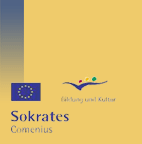Integration of technical
education in primary education
1. Introduction
In this chapter we will try
to identify the real problem in integrating technical education into primary
education.
Following the state of the art of technical
education in our countries described in chapter 1 and the educational approach,
we will concentrate on the consequences of making products within this project.
What is
the problem?
Not the child! On the
contrary: Children really do want to use technology. Several studies (e.g. the
PATT studies) prove this. Technology is a challenge for children: they can make
things themselves; they are the inventor. Meanwhile, a lot of ready-to-use
lesson materials are developed in the process. The main question is: how do you
get the teachers to use the material?
It looks like the teacher is
the real problem to make a start with technology.
So far, there is not much
research on the attitude of teachers towards technology. A recent small study
of the teachers of a big school in The Hague had a surprising result: older
teachers appeared to pay more attention to technology than younger teachers. An
explanation might be that, though younger teachers had technology as a subject
in their own teacher-training curriculum, they are not that experienced as
their older colleagues to solve several problems while introducing technology.
The older teachers are missing the subject knowledge to work with technology as
a subject. They do, however, have enough experience to put it in their curriculum.
Though
this was not a scientific research project, it might indicate that this is a
signal worth keeping an eye on while making materials for primary education.
What are the basic
conditions?
In the circle of
development-oriented approach three concepts are in the centre. These are at
the same time preconditions and aims for the same learning process. This goes
for the learner as for the teacher.
-
being self-confident
-
being emotionally free
-
being curious.
These conditions must be fulfilled in order to function well. They
are very much equal to what Prof. Stevens, educationalist in the Netherlands,
describes as the concepts of autonomy, relation and competency. We will explain
this further in the following paragraphs.
Most of the time we
concentrate on the learner, but the conditions for an optimal learning process
are equally important for the teacher.











